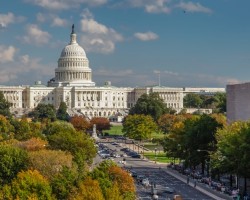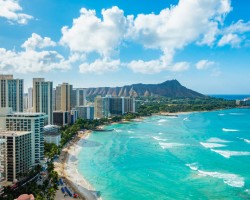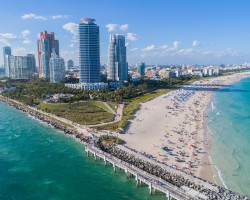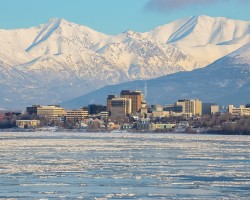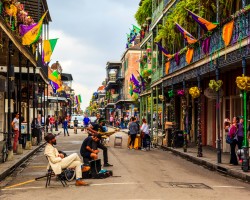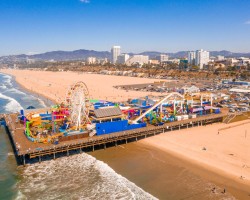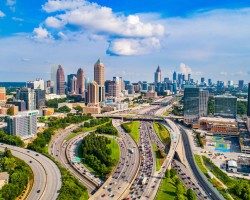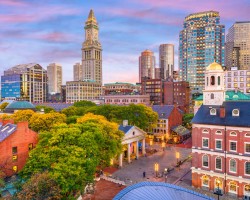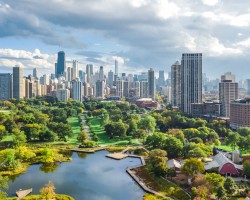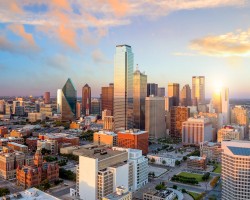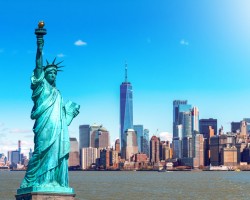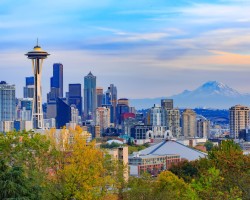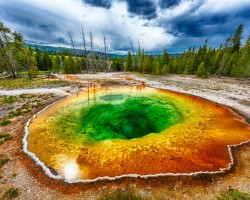Best time to go to the United States (USA) for a perfect weather and where to go?
When is the best time to go to the United States (USA)?
Overall, the best time to visit the United States is from early April to late October. Thanks to its vast territory with multiple time zones, different climates, and numerous landscapes to explore, the United States can offer welcoming weather all year round depending on the state or city chosen.
Generally, it is during the months of June, July, and August that the entire country has a mild climate, which can even be ideal. This is particularly the case in California, Hawaii, and the Rockies. However, this period also corresponds to the peak tourist season. As a result, airfares soar, as do prices on-site, whether for accommodation or car rentals. When is the best time to visit the United States to avoid these inconveniences? It is best to favor the months just before or just after, namely April-May and September-October.
Some American regions can be visited all year round, such as Louisiana, Florida, California, and Hawaii. Elsewhere, winter can be a great opportunity to enjoy winter sports. For example, you can ski in the Rockies, the Sierra Nevada, or even in the Appalachian and Cascade ranges. To have perfect weather conditions, you will need to choose the months when snowfall is at its maximum, generally between November and April, or even until May for some high-altitude slopes. The downside is that many roads are closed in national parks during this period, and for those that are open, rangers require travelers to be equipped with chains or a 4x4 vehicle.
For a vacation focused on swimming and relaxing on the beaches, the southernmost regions are safe bets during the appropriate seasons. Indeed, as you go further north, whether on the west coast or the east coast, the ocean temperature can be discouraging!
If you want to go on a city break for a few days in a major American city, the schedule is more flexible. Even if the season is not ideal, it is always easier to seek shelter from rain or cold in New York than in the great outdoors! Therefore, if you travel during the low season, the major advantage will be financial.
Where and when to go based on the weather?
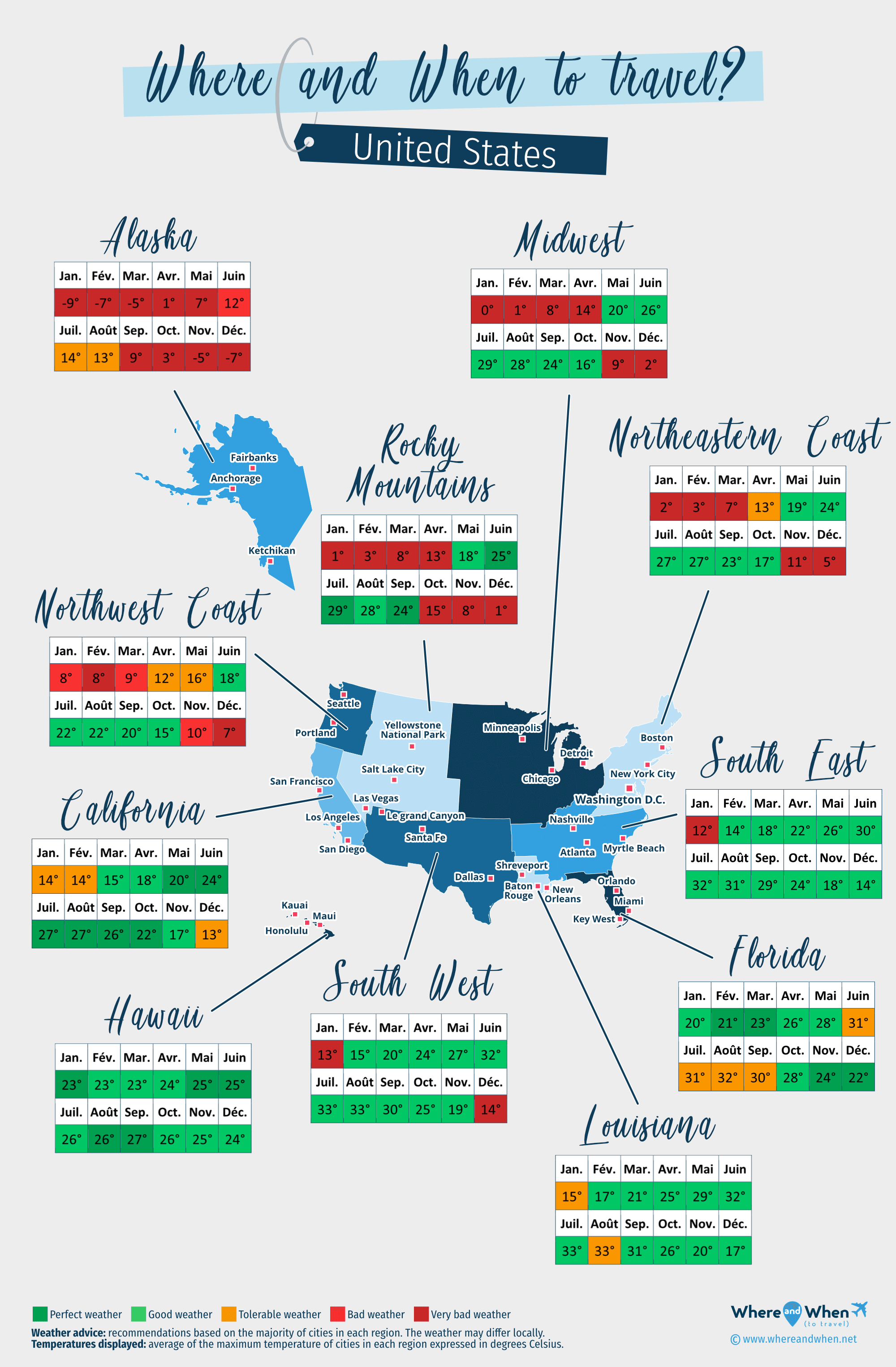
Alaska
Anchorage, Fairbanks, Ketchikan...
California
Los Angeles , San Francisco, San Diego...
Florida
Miami, Orlando, Key West...
Hawaii
Honolulu (Oahu), Maui, Kauai (Garden Isle)...
Louisiana
New Orleans, Baton Rouge, Shreveport...
Midwest
Chicago, Minneapolis (Minnesota), Detroit...
Northeastern Coast of United States
Washington D. C., New York City, Boston...
Northwest Coast of United States
Seattle, Portland, Long Beach (Washington)...
Rocky Mountains
Las Vegas, Yellowstone National Park, Salt Lake City...
South East of United States
Atlanta, Nashville, Myrtle Beach...
South West of United States
Dallas, Grand Canyon, Santa Fe (New Mexico)...
To get all the information about the climate and weather in the United States (USA) for a specific month, click on the corresponding link below:
United States in january United States in february United States in march United States in april United States in may United States in june United States in july United States in august United States in september United States in october United States in november United States in december
Best time to travel to United States by cities
Climate and Weather in the United States (USA)
Vast country bordering Mexico and Canada, the USA have almost every type of climate found on Earth. The main climate in the United States is humid subtropical with no dry season and hot summers, such as in Washington DC. On the other side of the country, around Seattle, the climate is Mediterranean with mild summers.
Elsewhere, different states enjoy a wide range of climates from continental to desert, with tropical touches in between. Thus, it is possible to experience both extremes in the same day at either end of the United States! Generally, temperatures are higher in the south, and seasons more contrasting in the north.

Climate in California
As we have seen, the weather in the United States experiences extremes. California alone is a good example of the possible variations. While the overall climate is Mediterranean with mild to hot summers, the presence of the Pacific Ocean on one side and the Sierra Nevada mountains on the other creates striking differences:
- In San Francisco, even though the average sunshine is good, temperatures remain fairly stable throughout the year. Rain is frequent in winter, and the famous bay area often struggles to lift the fog.
- Northeast of Los Angeles is arid. Summers are scorching, and it's hard to bear these temperatures. This region includes the famous Death Valley, a true desert!
- In the southern part of the state, the weather is milder, and the surroundings of San Diego are perfect for enjoying the beach with ideal temperatures between June and October.
- Inland, in Yosemite or Sequoia National Parks, snow is abundant in winter, while summer brings pleasant warmth without being scorching.
Climate on the Northwest Coast of the United States
Encompassing the states of Washington and Oregon, the northwest of the United States has a mainly Mediterranean climate with pleasant summers and mild winters. More temperate than the eastern part of the country, this area is marked by significant rainy periods, especially in winter, between November and March. Spring sees a gradual rise in temperatures, but it's not until June that one can fully enjoy the region, up to October. However, unless you're brave, don't expect to swim as water temperatures do not exceed 15°C (59°F) even in the hottest part of summer.
Climate in the Rocky Mountains
Stretching from Montana in the north to the vicinity of Las Vegas in the south, the Rockies traverse almost all of the United States, resulting in numerous climatic variations. Here are some examples:
- In Yellowstone National Park to the north, the climate is subarctic, and winter lasts a long time. Warmer temperatures only appear with the arrival of June.
- Towards Denver, Colorado, there is a semi-arid steppe climate, dry and cold. Winter temperatures regularly drop below 0°C (32°F) , while summers are pleasant.
- Heading south, the climate becomes increasingly arid and dry, with significant temperature variations between day and night or between seasons. This is the climate of Las Vegas, Nevada.
Climate in the Southwest of the United States
The best time to visit the southwest of the United States is from February to November. In December and January, in the mountainous regions of Arizona, temperatures drop dangerously, and heavy snowfall is not uncommon, especially towards the Grand Canyon. In Phoenix, the climate is more desert-like, hot and dry: in summer, temperatures can be extremely high.
Towards Dallas or Houston, Texas, the climate is humid subtropical with no dry season and hot summers. The atmosphere is stifling during the summer season, with temperatures reaching around 40°C (104°F) during the day. In winter, maximum temperatures are close to 15°C (59°F) , and precipitation is quite rare. Therefore, it is entirely possible to consider a trip during this period.
Climate in the Southeastern United States and Louisiana
In the southeastern United States and Louisiana, the climate is humid subtropical, with no dry season and hot summers. From North Carolina to South Carolina, through Georgia or Alabama, it is hot and humid almost all year round, with only January being cooler.
In summer, temperatures are scorching, and heavy rain is common, especially around New Orleans. It is not uncommon to see hurricanes arriving late in the season. In winter, it is mild, but rain is very present. The ideal time to visit is during the shoulder seasons, between March and June, or between October and December.
Climate in Florida
Located at the extreme southeast of the country, Florida is also known as “The Sunshine State”, quite a program! In the north, the humid subtropical climate offers weather conditions similar to those of Louisiana. Further south, around Miami or Key West, the climate is tropical, resembling that of the neighboring island, Cuba.
In general, it is better to avoid the months between June and September to visit Florida. Even though the temperatures seem appealing, the rains can be very violent, especially in August, and the risk of hurricanes is real towards the end of the season, particularly along the southern coasts.
Climate on the Northeast Coast of the United States
This part of the country experiences distinct seasons. Summers are very hot in Chicago, New York, or Salem, while winters are quite harsh with minimum temperatures close to -10°C, especially in January. In Boston, Massachusetts, the weather is more humid, with no dry season. The most favorable months to explore the region range from early May to late October.
Climate in the Midwest
With its mainly continental climate with hot summers, the Midwest is best explored between May and October. Spring and fall are not very pronounced, and winter is harsh with negative minimum temperatures and maximum temperatures around 5°C (41°F) between December and February. In Chicago and Wisconsin, summers are very pleasant, although brief showers are frequent. Further south, the humid subtropical climate of St. Louis, Missouri, makes July and August stifling, not to mention the frequent thunderstorms.
Climate in Alaska
Only the months of July and August are favorable for traveling to Alaska. Situated between Siberia and the Canadian Far North, this state experiences two main types of climates: a cold subarctic climate in the Anchorage region and a polar tundra climate in Barrow, extreme north.
In general, winter is very long, from late September to early June, and the shoulder seasons are particularly short. Three criteria strongly influence the climate in Alaska:
- Latitude: the farther north, the colder it gets.
- Altitude: there are numerous high reliefs, with Denali peak reaching 6200m.
- Distance from the ocean: temperatures are less extreme along the coasts.
Climate in Hawaii
Located north of the Polynesian triangle, the Hawaiian archipelago has a predominantly tropical climate, with some variations between the islands. Good news: you can enjoy top-notch weather all year round!
During winter, between December and February, temperatures are summery, with daytime averages around 25°C (77°F) . The only exception is Big Island, in the south, where the atmosphere is cooler. The main difference between winter and summer in Hawaii is the rainfall, which is heavier and more frequent in January and February. Add to this the trade winds, much to the delight of surfers!
In summer, from March to November, the weather is perfect, and the sun shines across the entire archipelago, especially along the western coasts, with the eastern coast being more prone to showers.
Temperatures and rainfall in the United States (USA)
On these 3 graphs, we present the evolution of temperatures of United States and month-by-month rainfall for the cities of Washington D. C., Honolulu (Oahu), Miami, Anchorage and New Orleans, as well as the month-by-month sea temperature for coastal cities.
Peak visitor numbers and tourist seasons in the United States (USA)
Find out when United States has its high tourist season (the period when the influx of tourists is highest) and off-peak tourist season using our data and figures.
Tourist seasons in the United States (USA)
The months with low numbers of tourists are: January, February, March, November and December. The number of visitors to United States is high in: April, May, June, July, August, September and October.
- Very low season in the United States (USA): January and February.
- Low season in the United States (USA): March, November and December.
- High season in the United States (USA): April, May and October.
- Peak season in the United States (USA): June, July, August and September.
Figure: Visitor index for United States month by month
Average price for flights to the United States (USA)
A return flight between Toronto and New York City is generally cheaper if you go in may ($ 209 on average): this is the best time for travellers on a tight budget. In contrast, you may end up paying $ 69 more for your airline ticket to New York City if you go in november.
Find the best price for your flight Flight prices to the United States (USA)
Where to go in the United States (USA)?
This table allows you to see the maximum temperature for each city and our opinion on the weather month by month (see colour legend below the table).
| Cities | jan. | feb. | mar. | apr. | may | jun. | jul. | aug. | sep. | oct. | nov. | dec. |
| Washington D. C. | 43°F | 47°F | 56°F | 67°F | 77°F | 86°F | 92°F | 88°F | 83°F | 70°F | 58°F | 49°F |
| Honolulu (Oahu) | 77°F | 77°F | 77°F | 77°F | 79°F | 81°F | 83°F | 83°F | 83°F | 83°F | 81°F | 79°F |
| Miami | 74°F | 76°F | 77°F | 81°F | 83°F | 86°F | 88°F | 88°F | 88°F | 85°F | 79°F | 77°F |
| Anchorage | 22°F | 25°F | 31°F | 41°F | 54°F | 59°F | 65°F | 63°F | 56°F | 43°F | 29°F | 25°F |
| New Orleans | 63°F | 67°F | 72°F | 77°F | 85°F | 90°F | 92°F | 92°F | 88°F | 81°F | 72°F | 67°F |
| Los Angeles | 68°F | 68°F | 70°F | 74°F | 76°F | 79°F | 85°F | 86°F | 86°F | 81°F | 76°F | 67°F |
| Atlanta | 52°F | 56°F | 65°F | 74°F | 81°F | 90°F | 92°F | 90°F | 86°F | 76°F | 63°F | 56°F |
| Boston | 36°F | 38°F | 45°F | 58°F | 68°F | 77°F | 85°F | 85°F | 76°F | 65°F | 52°F | 41°F |
| Chicago | 31°F | 32°F | 43°F | 52°F | 63°F | 72°F | 79°F | 79°F | 74°F | 61°F | 49°F | 38°F |
| Dallas | 58°F | 59°F | 70°F | 76°F | 83°F | 94°F | 97°F | 99°F | 90°F | 79°F | 68°F | 58°F |
| Grand Canyon | 43°F | 47°F | 56°F | 63°F | 70°F | 85°F | 86°F | 85°F | 79°F | 67°F | 56°F | 43°F |
| Las Vegas | 52°F | 56°F | 67°F | 76°F | 85°F | 97°F | 101°F | 99°F | 94°F | 77°F | 63°F | 50°F |
| New York City | 38°F | 41°F | 49°F | 59°F | 70°F | 79°F | 86°F | 85°F | 77°F | 67°F | 54°F | 45°F |
| Salt Lake City | 38°F | 40°F | 49°F | 58°F | 67°F | 79°F | 88°F | 86°F | 79°F | 63°F | 50°F | 38°F |
| Seattle | 47°F | 49°F | 54°F | 59°F | 68°F | 74°F | 81°F | 81°F | 74°F | 63°F | 52°F | 47°F |
| Yellowstone National Park | 23°F | 23°F | 31°F | 38°F | 49°F | 63°F | 74°F | 72°F | 63°F | 45°F | 31°F | 22°F |
| Key West | 74°F | 76°F | 76°F | 79°F | 81°F | 85°F | 86°F | 86°F | 86°F | 83°F | 79°F | 77°F |
| Orlando | 70°F | 74°F | 77°F | 83°F | 88°F | 90°F | 92°F | 94°F | 90°F | 85°F | 77°F | 74°F |
| Fairbanks | 4°F | 13°F | 20°F | 38°F | 59°F | 68°F | 72°F | 63°F | 52°F | 34°F | 13°F | 7°F |
| Baton Rouge | 61°F | 65°F | 72°F | 79°F | 86°F | 92°F | 94°F | 94°F | 90°F | 83°F | 70°F | 63°F |
Legend:
perfect weather
good weather
tolerable weather
bad weather
very bad weather
About United States
What can I do in the United States (USA)?
Beaches / swimming
Nature and countryside
Culture and heritage
Sports
Family travel
Crafts / shopping
Gastronomy
Nightlife
Is this weather information for United States reliable?
Climate data for United States has been gathered every day since January 2009. The analysis of these meteorological data for United States allows us to determine the average for each month in Washington D. C., Honolulu (Oahu), Miami, Anchorage, New Orleans, Los Angeles , Atlanta, Boston, and 284 other cities.
So yes: this data is reliable except in cases of temporary climate disruption in the region.

